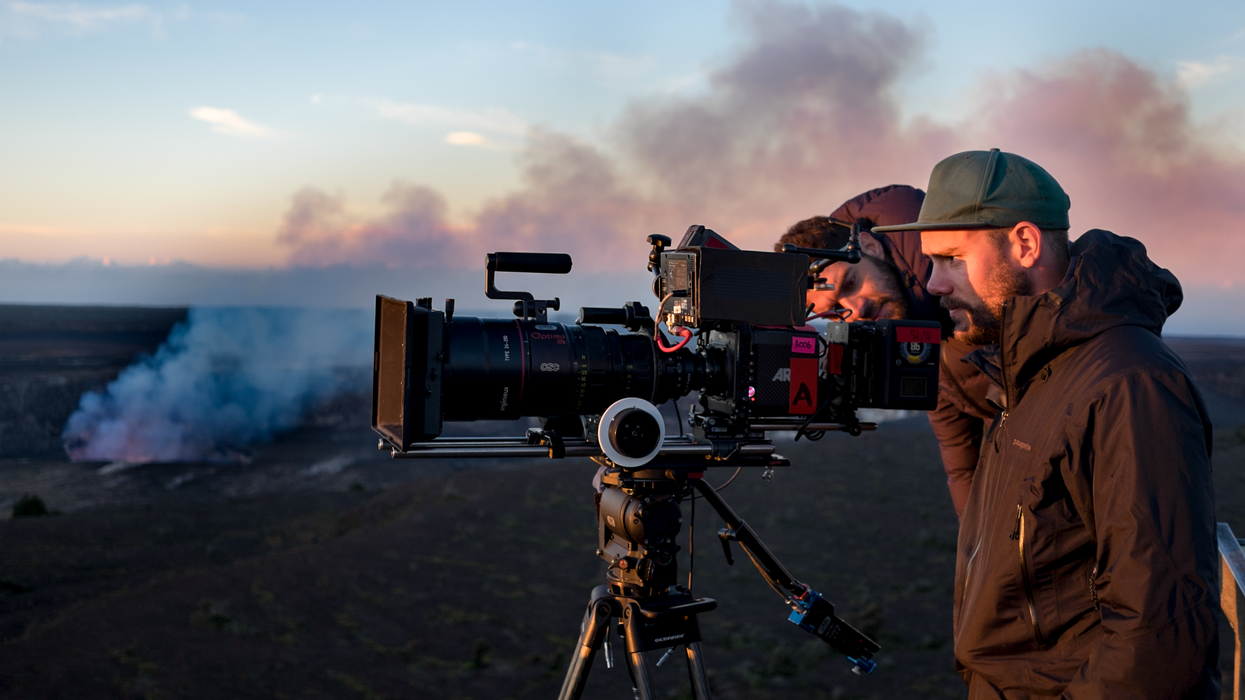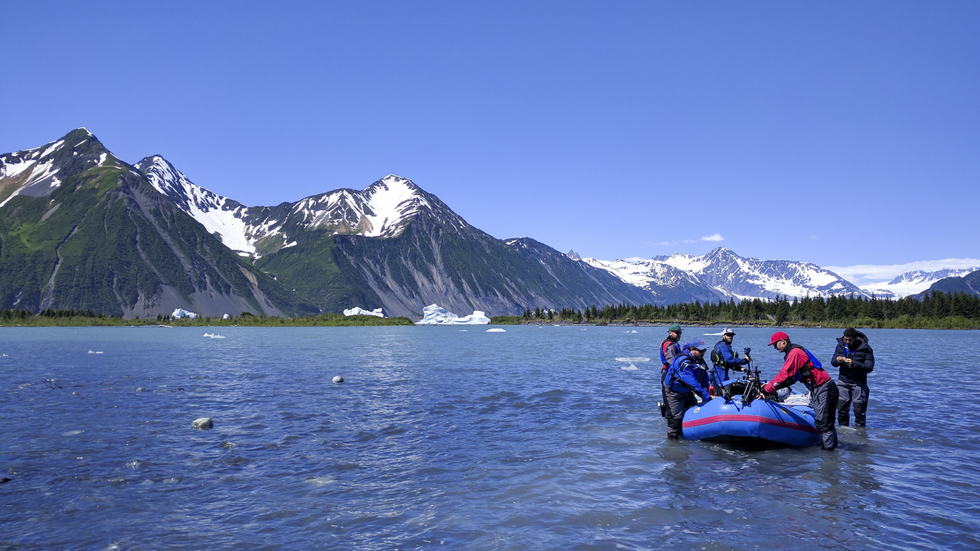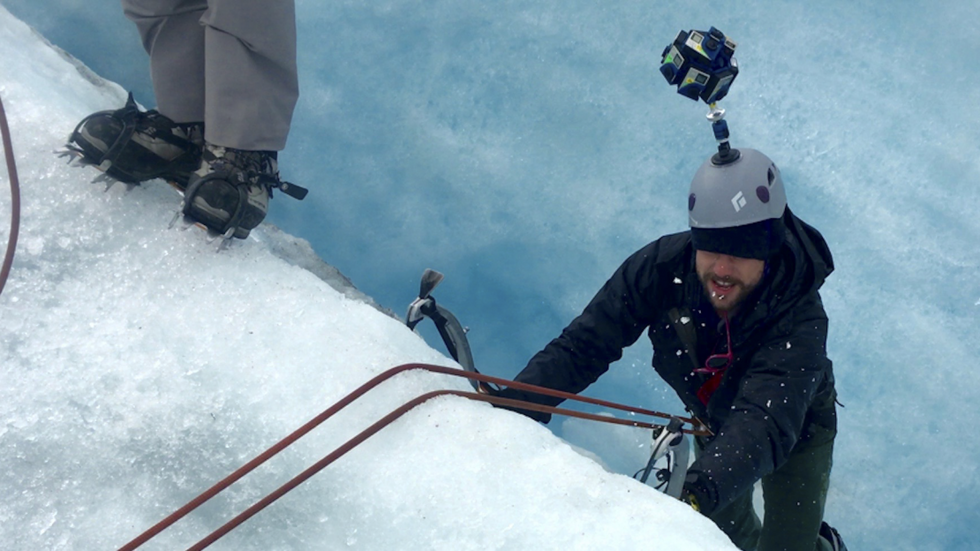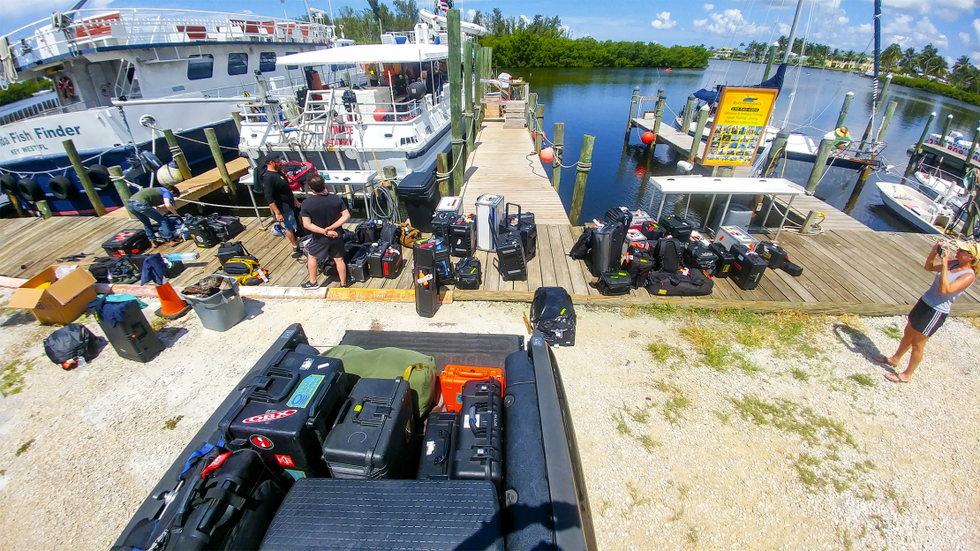Uncover 'The Hidden Worlds of the National Parks' with DP Adam Newport-Berra
How a cinematographer directed a massive VR and aerials project while climbing, horseback riding, and kayaking.

When the time came for my wife and I to try backpacking for the first time, our double-tap research narrowed our choices down to one of the 52 U.S. National Parks. Our natural next step was Google, and within a few minutes, we were immersed within the interactive site, The Hidden Worlds of the National Parks. Created by Google, Stinkdigital of NY, and directed by Adam Newport-Berra, it commemorates the 100th year of the U.S. National Park system in a dynamic new way that takes us well beyond the inspiring, but often too-quickly consumed, Instagram images of wanderlust. The site utilizes 360 VR, beautiful traditional 2D storytelling, and aerials to create an interactive private tour with a park ranger.
Inspired by the site, I called up Adam Newport-Berra and discovered that his love of the outdoors combined with his accomplishments as cinematographer (Barry, Creative Control, Approaching the Unknown) empowered his team to take on this ambitious, multifaceted project in only a 28-day timeframe.
"We traveled with about 40 cases that contained 30 GoPros, six different 360 rigs, two Alexa packages, a prime lens set, and an Optimo 12:1 zoom."
NFS: How did this project come about?
Newport-Berra: Google was working with Stinkdigital on this project to develop an experiential platform that encompassed 360 video and interactive storytelling. The goal was to allow visitors to choose their own adventures within each park. I was introduced to the project when contacted by Stinkdigital Executive Creative Director, Ben Hughes. I knew they were not only interested in a short form film but a combination of 360 and traditional two-dimensional video. My pitch coincided with Google’s Creative Director, Nick Carbonaro’s vision. Both Ben and Nick knew my background in outdoor photography and commercial film work and that I would treat the project with the utmost importance. Our production team at Ghost Robot coordinated all of the planning and oversaw the post-production as well.
NFS: What were some of the initial challenges of the project?
Newport-Berra: The first challenge was simply deciding on which five of the 52 National Parks we were going to select. We wanted to do our best to pay tribute to the Park Service and to our country’s diversity and varying landscapes. It was tough to decide that were not going to show Yosemite or Yellow Stone, but part of the goal of this project was to show that there were more to the National Parks than those you see regularly see on posters and t-shirts. For example, the Dry Tortugas National Park in the Florida Keys.
The next challenge was figuring out how we were going to shoot them. We spent time talking with the local rangers on the phone and planning the trip remotely. It was difficult at times to rely solely the web and other because you would like to have your own perspective.
"A problem with larger rigs is that they don’t depict 360 as well. They’re bigger than a human head, so when you look around it’s like you have the head of an elephant."
The technical aspects of the shoot were next. The 16:9 shots were done on the Alexa. It’s the camera I work with regularly and was confident in its performance. Capturing the 360 footage became more of a question of, what tech were we to going to use? What sort of situations can we place these cameras in that will use the 360 to its utmost potential, but not be overwhelming given that the quality and resolution are not the same as the Alexa?

Newport-Berra: After extensive testing, we knew we wanted to capture climbing, horseback riding, kayaking in 360. We needed to then figure out how to stabilize for each shot in the project. My operator, Soren Nielsen, captured almost all of the Alexa footage on the MoVi. He is incredible and found saw so many great shots. All of the 360 rigs were comprised of a GoPro array in different cages and stabilized by a variety of manufacturers like the Kenyon Gryo Stabilizer and the Nodal Ninja Travel Pole. The stitch tests were done by Zach Shukan at Omaga Darling. With Zach, we looked at how much distance our 360 cameras needed to our subjects without falling apart, and to still be engaging. Finally, we did a lot of testing with Google for the right compression rates to achieve the optimal stream quality for instantaneous playback and still looking good. Color correction tests with Michael Rossiter at the Mill helped massage the look of the GoPro footage alongside the Alexa’s superior image.
We did talk about using Alexa or RED 360 rigs but given we were traveling with a tiny crew for 30 days, and putting the rig in some insane locations, they were just too big for this production. In addition, we found that a problem with larger rigs is that they don’t depict 360 as well. They’re bigger than a human head, so when you look around it’s like you have the head of an elephant. So when you’re close to things the depth perception is just not right. Not to mention they are much harder to stitch.
NFS: Would you take on 360 Narrative Film?
Newport-Berra: If I think it’s the right project then I’d be totally interested in it. I feel it has to be warranted and be the proper tool for telling the story. I’m always going to be a proponent of 2D storytelling because it gives a certain honor and weight to the artist to direct the audience to what the director thinks is important in the frame. I also love making a movie seen on the big screen and by an audience. There is a lot of power in watching a film with a crowd in the traditional theater environment. Thus far, 360 experiences are quite personal and you basically black out the world. I do think 360 is amazing and it’s a very exciting time in our field. It was a perfect approach for this project since we were providing the viewer entertainment that asked them to be active participant thereby intensifying the learning environment.

NFS: How did you capture the beautiful aerials?
Newport-Berra: Drones are prohibited in National Parks, so we used a full-size helicopter with a Cineflex. It was really amazing to have the helicopter over these parks because we could capture so much more. I work with drones a lot and one frustration I have with them is that you’re always missing what you want because you’re not up there. They’re great for really fast work and you cover a lot a ground for a lot less money, but there is something about being up in the air, looking around, and making split second decisions to capture something you didn’t expect.
For example, while flying in Alaska hovering over one of the fjords, we spotted a humpback whale from the corner of my eye off in the distance that we would have never seen if we were focused on a small monitor. We spent about two hours over each of the five National Parks after working out our flight plan with each pilot to cover the shot list, but left some time for spontaneous ideas. It was very cool to spend a lot of time in the air and not have to come back down to change batteries.
"The gases emitted above the volcano put our safe flying distance pretty high so the long lens really helped."
NFS: What was your lensing and gear for the aerials?
Newport-Berra: In Hawaii, while covering Volcano’s National Park, we used a Canon 50-1000mm zoom on a RED in a Cineflex. The gases emitted [from] the volcano put our safe flying distance pretty high so the long lens really helped. I was controlling the wheels of the Cineflex and had a direct line to the pilot, which made it very efficient. For Alaska’s, Kenai Fjords, and Bryce Canon located in Utah, we used Soren’s MoVi as our remote head on our other helicopter flights and found a good workflow. It wasn’t possible to get the Cineflex to each location due to the cost. We were trying to scale back as much as possible to loosen our budget for other aspects of the production.

NFS: What gear did you use for the shoot?
Newport-Berra: We traveled with about 40 cases that contained 30 GoPros, six different 360 rigs, two Alexa packages, a prime lens set, and an Optimo 12:1 zoom. This all gave our camera assistant, Tim Arene, a lot of work but he was our savior on the shoot.
NFS: What did you learn after taking on this project?
Newport-Berra: This project was large in its scope and we had a tight turnaround, but when you can assemble a great team of such talented people to do what they do best, it takes a lot of the pressure off. Our creative director, Nick Carbonaro, stressed that big part of The Hidden Worlds of the National Parks was not just showing off the beauty of each park like we have come to know on Planet Earth or National Geographic. The goal was to convey a sense of stewardship to be rooted and told through the human element of the Park Rangers. We didn't want just to show these spaces being wild and untamable, but instead, showcase five parks to instill a sense of learning and exploration on a personal level.










![Ethos, Pathos, Logos: 20 Effective Ways to Advertise [Infographic]](https://nofilmschool.com/media-library/ethos-pathos-logos-20-effective-ways-to-advertise-infographic.jpg?id=34064614&width=600&height=600&quality=90&coordinates=560%2C0%2C0%2C0)

